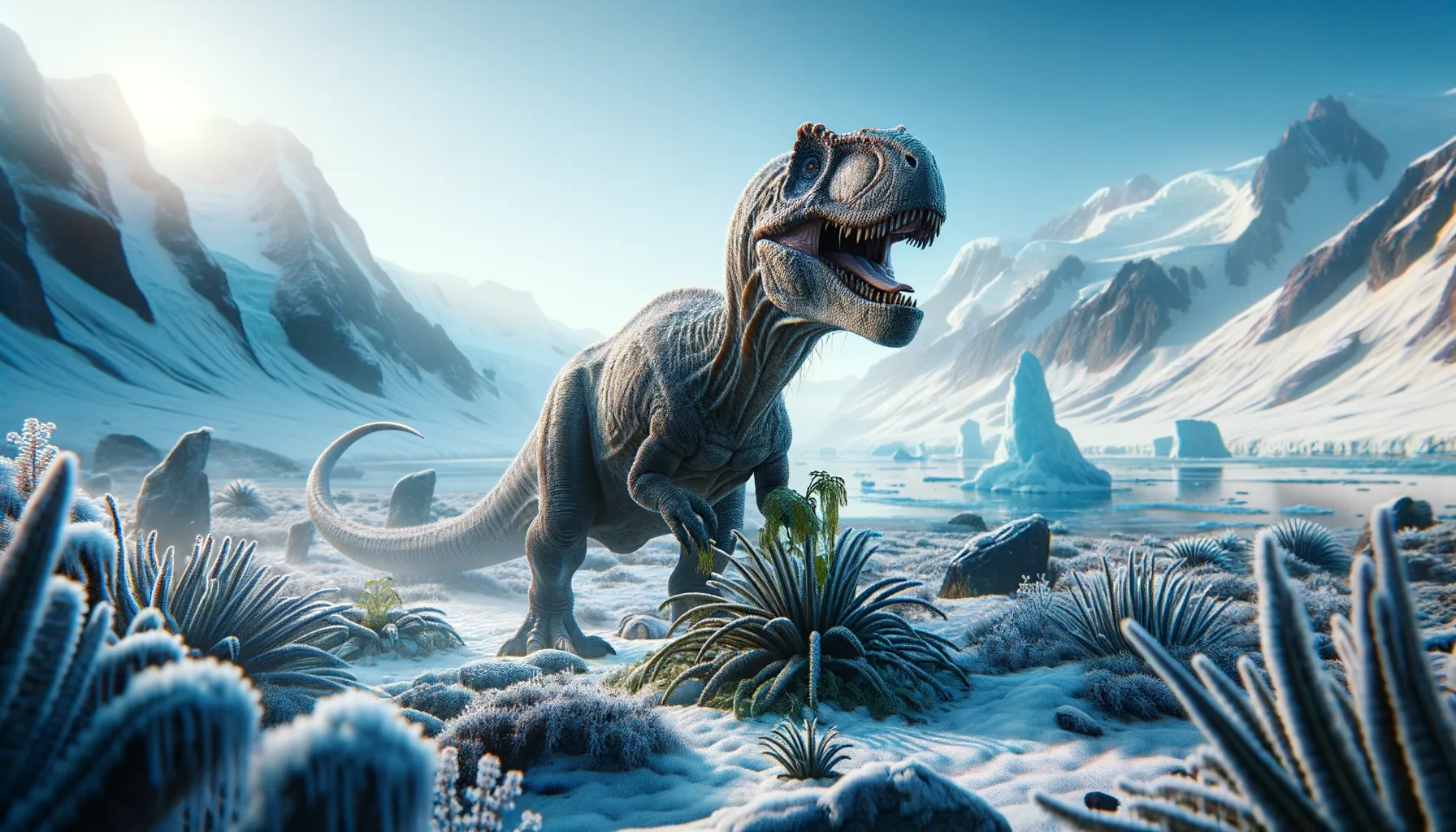
Morrosaurus
An Antarctic herbivore thriving in the cold.
Period
Cretaceous
Length
Roughly 4 to 5 meters long.
Height
Around 1.5 to 2 meters tall at the hip.
Weight
Estimated to weigh around 300 kilograms.
Morrosaurus was a plant-eating dinosaur that roamed the icy landscapes of Antarctica during the Cretaceous period. It belonged to the group of bird-footed dinosaurs known as ornithischians and is related to iguanodontians. This dinosaur is significant for understanding the distribution of dinosaurs across continents and their adaptation to polar environments. Morrosaurus helps paleontologists shed light on how dinosaurs survived in extreme conditions.
Diet
Morrosaurus primarily fed on plants. Its beak-like mouth helped it crop vegetation effectively. Most likely, it grazed on the available ferns and conifers in its habitat.
Hunting
Being a herbivore, Morrosaurus did not hunt. It foraged for plants and relied on its keen senses to detect sources of food. Its group behavior might have helped in finding food more effectively.
Environmental challenges
Living in Antarctica, Morrosaurus faced extreme cold and long periods of darkness during winter. It had to adapt to a diet that changed with seasons, focusing on whatever vegetation was available. The fluctuating climate conditions likely impacted its survival and behavior.
Speed
Likely moderate due to bipedal structure.
Lifespan
Presumed to be several decades.
First discovery
First fossils were discovered in Antarctica in 2002.
Fun Facts
- Morrosaurus was discovered in Antarctica, a place that's not usually associated with dinosaurs!
- This dinosaur lived during the Cretaceous period, about 70 million years ago.
- Morrosaurus was a herbivore, which means it fed on plants.
- It belonged to a group called ornithopods, known for being fast runners.
- Despite living in a cold climate, Morrosaurus thrived, showcasing the adaptability of dinosaurs.
- Its fossils were found on James Ross Island, providing insights into the polar environments of the past.
- Morrosaurus was relatively small compared to other dinosaurs, about the size of a sheep.
Growth and Development
Like many dinosaurs, Morrosaurus likely experienced rapid growth during its early years. As it matured, it would have developed the robust limbs and strong beak characteristic of its genus. Fossil evidence suggests it had to be adaptable to the harsh, changing climates of its environment.
Habitat
Morrosaurus lived in the cold, forested regions of ancient Antarctica. During the Cretaceous, the continent was not as icy as today but still had severe weather conditions. The dinosaur's environment included a range of lowland terrains with diverse plant life to support herbivorous species.
Interaction with other species
Morrosaurus likely interacted with other herbivores and had to be wary of any carnivorous species in its environment. It might have lived in groups, helping deter smaller predators. Coexistence with other species involved competition for food resources, particularly during harsher seasons.
Natural lifespan
Morrosaurus is believed to have lived for several decades in the wild.
Reproduction
Like many dinosaurs, it is hypothesized that Morrosaurus laid eggs. Nesting sites would have been strategically chosen to ensure warmth and safety. Parental involvement might have included guarding the nests from predators and environmental hazards.
Social behaviour
Morrosaurus might have been a social animal to some extent, potentially moving in herds for protection. Living in groups could aid in securing resources and ensuring collective safety. Social structure would have played a role in its survival strategies.
Fossil locations
Fossils of Morrosaurus have been primarily found in Antarctica. The discovery of these fossils has provided significant insights into the distribution of dinosaurs across ancient continents. Antarctica's fossils are crucial for understanding polar life during the Cretaceous period.
